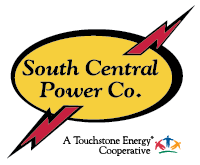Get Energy Smart With Building Maintenance
Lighting and HVAC make up more than half of a building's overall energy use. By following this checklist of maintenance and operational practices, you can realize significant savings.
Published:

Saving energy is a great way to cut costs and boost profitability. But you're a business owner, not an energy professional, so where do you start? Here's a tip: Lighting and HVAC systems make up more than 50% of commercial building energy use, according to the U.S. Department of Energy. The following checklist of maintenance and operational practices can help you start saving.
Lighting
Effective lighting maintenance can reduce your energy costs, improve productivity and enhance visibility. Follow these best practices:
- Clean the dust off fixtures, lamps and lenses every six to 12 months.
- Clean or repaint small rooms every year and larger areas every two or three years. Dirt collects on surfaces, reducing the amount of light they reflect.
- Replace lights in groups. Lamps can lose up to 30% of light output over their service life. Group replacement saves labor and helps keep illumination levels high.
- Make sure lamps and fixtures are compatible. Installing new fixtures with new lamps increases energy efficiency and service life.
- Periodically test light levels to ensure they match the space and tasks being performed. The Illuminating Engineering Society provides light level recommendations.
HVAC
A preventive maintenance program can help reduce energy costs and keep building occupants comfortable and productive all year long.
- Hire a qualified professional to inspect and clean your heating and cooling systems at least once per year.
- Inspect seals, valves, pipe joints and instrumentation for leaks and make repairs as needed.
- Check gauges and other instrumentation to ensure that they are in line with building maintenance policies or manufacturer's guidelines.
- Be sure all dampers and linkages are connected and opening and closing as intended.
- Clean heat transfer coils and replace filters as needed.
- Inspect motors and check belts regularly for tightness.
- Make sure your cooling system is charged with the right type and amount of refrigerant — too little or too much can increase operating costs.
- Regularly clean and recalibrate mixed-air and supply-air sensors to match occupancy schedules and building operating conditions.
Preventive maintenance will improve the energy efficiency of these systems, and you'll have the added benefits of increased equipment life and reliability. What are you waiting for? Make preventive maintenance a part of your business energy strategy.
Assess your business
A preventive maintenance program that optimizes energy savings is more than just a checklist of items. Coordinate your preventive maintenance program with your overall energy management plan. Review maintenance policies when considering equipment upgrades or a building redesign.
